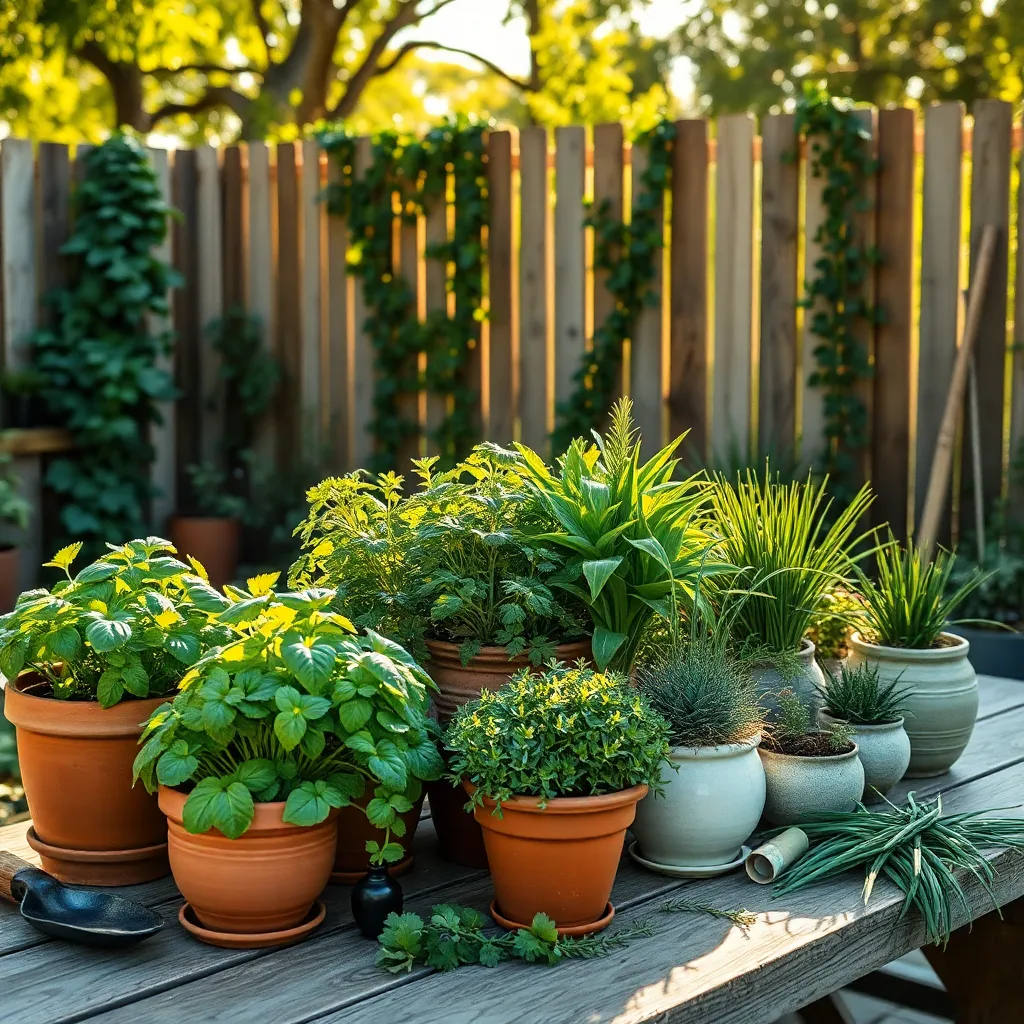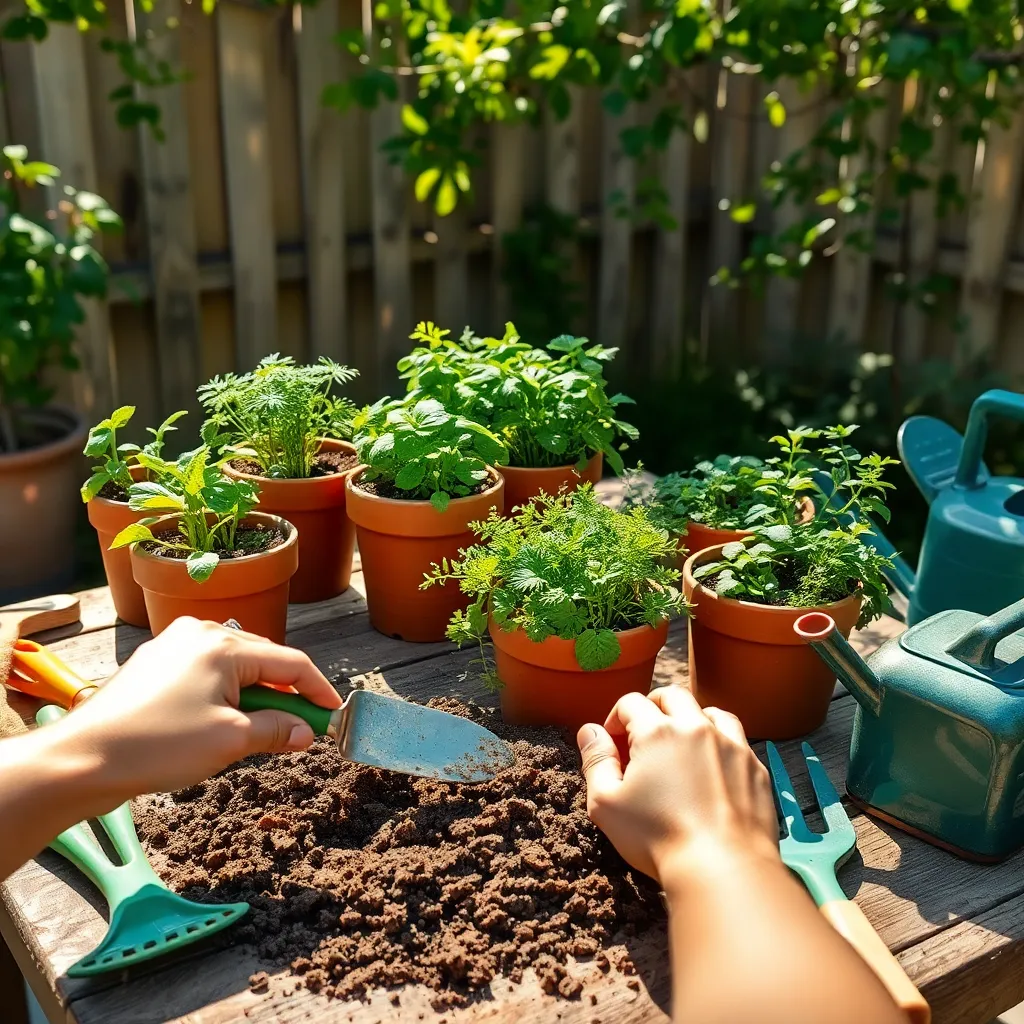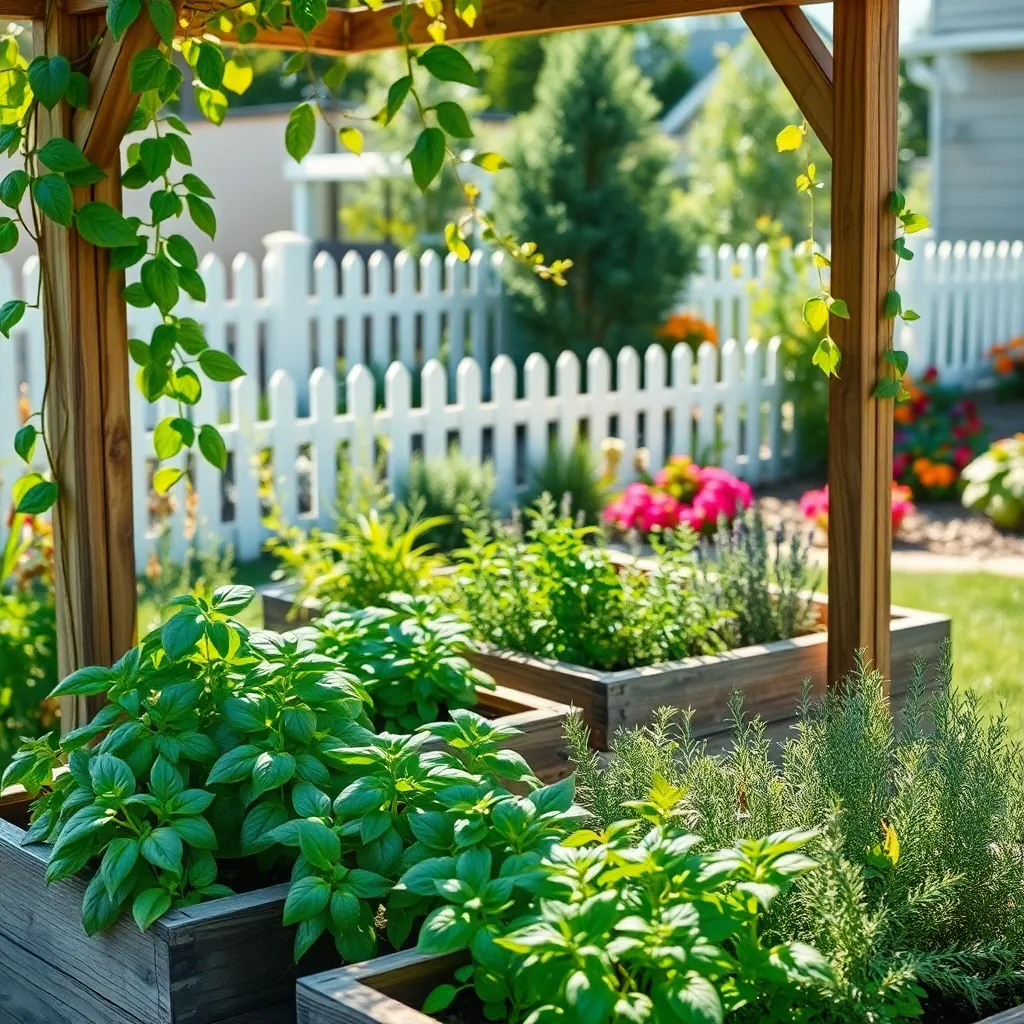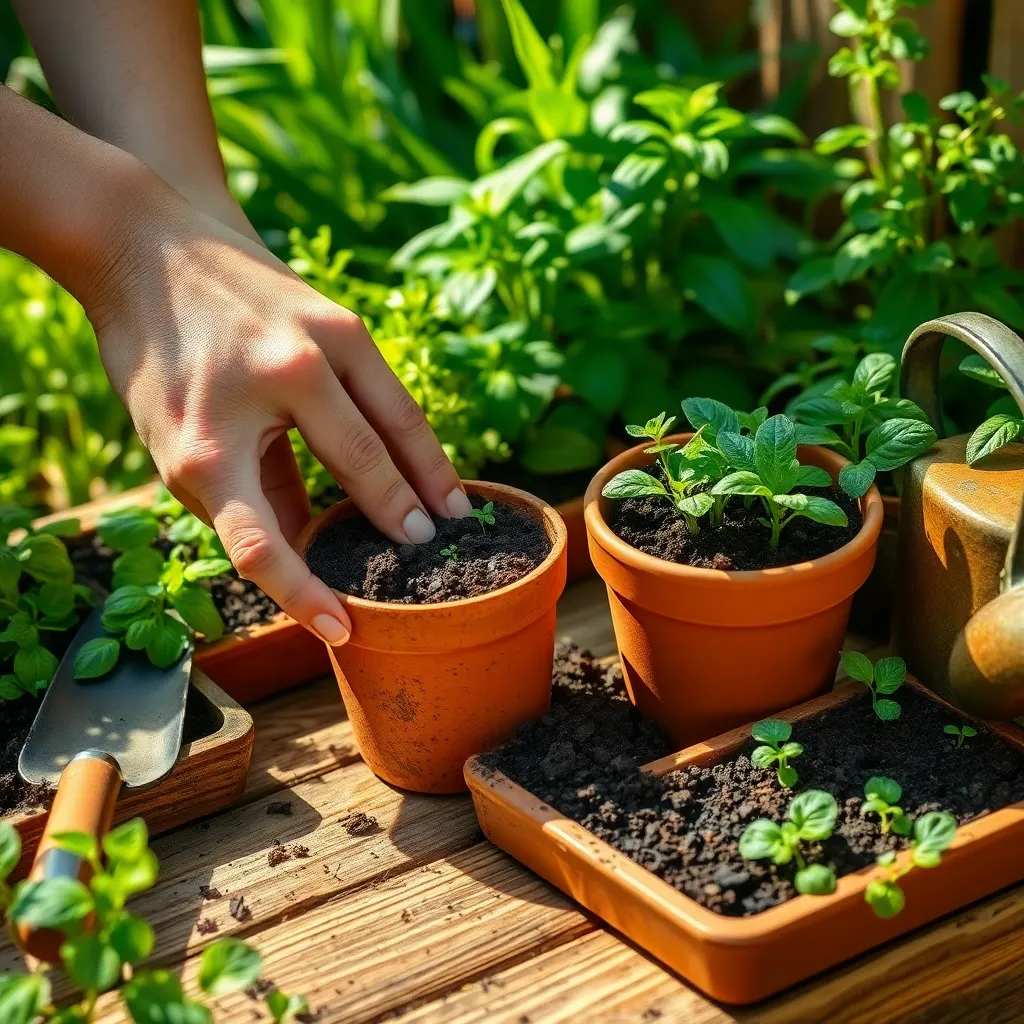Imagine stepping out into your backyard or onto your balcony, greeted by the vibrant scents of rosemary, basil, and mint. Whether you’re a seasoned gardener or just beginning to explore the wonders of growing your own plants, starting an herb garden can be an incredibly rewarding venture. Herbs are not only a feast for the senses but also a gateway to a more self-sufficient and flavorful lifestyle. From crafting delectable meals to brewing soothing teas, your homegrown herbs will become indispensable in your daily routine.
The importance of cultivating an herb garden extends beyond culinary delights. Herbs have been cherished for centuries for their medicinal properties, aesthetic appeal, and ecological benefits. As you embark on this green journey, you’ll discover how to select the perfect herbs for your climate and space, whether it’s a sprawling garden or a cozy windowsill. Together, we’ll delve into practical tips on soil preparation, watering, and harvesting, ensuring that your herb garden thrives throughout the seasons.
For beginners, we’ll keep things simple and stress-free, guiding you step-by-step through the process of planting and nurturing your first herbs. Experienced gardeners will find fresh insights into maximizing yields and experimenting with new herb varieties. By the end of this article, you’ll be equipped with the knowledge and confidence to cultivate a thriving herb garden that enhances both your home and lifestyle. Let’s dig in and unlock the secrets of successful herb gardening, transforming your outdoor space into a lush, aromatic haven.
Select Ideal Herb Varieties

When selecting herbs for your garden, start with popular varieties like basil, parsley, and mint, as they are easy to grow and versatile in the kitchen. Consider your climate and the specific growing conditions of your garden to ensure your chosen herbs will thrive.
Research each herb’s sunlight and water requirements; for instance, basil thrives in full sun, while mint prefers partial shade. Ensure that the soil is well-draining and rich in organic matter to support healthy growth for most herbs.
For a more diverse herb garden, include both annuals, such as cilantro, and perennials, like rosemary, to enjoy a variety of flavors throughout the year. Advanced gardeners might experiment with less common herbs like lemon balm or tarragon for unique culinary possibilities.
Group herbs with similar care needs together to simplify your gardening efforts. Regularly monitor your plants for pests and diseases, and use organic solutions to maintain a healthy garden ecosystem.
Prepare Well-Draining Soil

To ensure your herb garden thrives, it’s critical to prepare well-draining soil. Start by assessing your current soil type, as herbs generally prefer a sandy or loamy composition that allows excess water to escape easily.
Incorporating organic matter like compost or well-rotted manure is an excellent way to improve drainage and nutrient content. You can also add sand or perlite to clay-heavy soil to enhance its draining capabilities, preventing root rot.
Consider using raised beds or containers to have more control over the soil composition and drainage. Raised beds can be filled with a custom mix of soil that promotes healthy root growth, making them a great option for areas with poor natural drainage.
Regularly check the moisture level by inserting your finger an inch into the soil; it should feel slightly damp but not wet. Herbs like rosemary and thyme thrive in drier conditions, so ensure the soil dries out between waterings to mimic their natural environment.
Choose Suitable Garden Location

Locating the perfect spot for your herb garden is crucial for its success. Ideally, choose a location that receives at least six to eight hours of sunlight daily, as most herbs thrive in full sun.
Observe your garden space throughout the day to understand the light patterns. If your garden lacks consistent sunlight, consider planting shade-tolerant herbs like mint or chives, or use reflective surfaces to maximize available light.
Good air circulation is also important to prevent disease and promote healthy growth. Avoid areas that are prone to strong winds, which can cause stress and dehydration in herbs; use barriers such as hedges or fences if needed.
Ensure your chosen location has easy access to water, making regular watering convenient and efficient. Herbs prefer moderately moist soil, so having a water source nearby will help maintain the proper moisture levels without overwatering.
For those with limited space, consider using containers or vertical garden structures. This not only optimizes space but also allows you to move your herbs to follow the sun or bring them indoors during colder months.
Plant Seeds or Seedlings

Deciding whether to start with seeds or seedlings is a crucial step in establishing your herb garden. Seeds offer a more economical option, allowing you to cultivate a wider variety of herbs, but they require more time and patience to grow.
Purchasing seedlings, on the other hand, provides a head start since they are already partially grown. This approach is ideal for beginners who want quicker results and less initial effort.
When opting for seeds, it’s essential to use a seed-starting mix, which is lighter than regular potting soil and promotes better drainage. Keep the soil consistently moist but not waterlogged, as this can cause seeds to rot.
For those choosing seedlings, ensure you select healthy plants with vibrant foliage and avoid those with yellowing leaves or crowded roots. Transplant them into rich, well-draining soil and water thoroughly to help them establish quickly.
Regardless of your choice, herbs like basil, cilantro, and parsley are excellent for beginners due to their forgiving nature and quick growth. More advanced gardeners might enjoy challenging themselves with rosemary or lavender, which require more specific conditions.
- Ensure your chosen herbs receive at least 6-8 hours of sunlight daily.
- Regularly check soil moisture levels; herbs prefer soil that is kept consistently moist but not soggy.
- Consider starting seeds indoors if you’re in a cooler climate to extend the growing season.
Establish a Watering Routine

Establishing a consistent watering routine is crucial for the success of your herb garden. The first step is to understand the specific water needs of the herbs you have planted, as different herbs have varying requirements.
Most herbs prefer well-draining soil, which means they don’t like to sit in waterlogged conditions. To maintain the right balance, water deeply but infrequently, allowing the top inch of soil to dry out between waterings.
Consider watering your herbs early in the morning when the temperatures are cooler, reducing evaporation and giving plants time to absorb moisture before the day’s heat. If you’re unsure whether it’s time to water, a simple finger test can be a reliable guide—stick your finger into the soil up to the first knuckle; if it feels dry, it’s time to water.
For more advanced care, pay attention to the specific needs of Mediterranean herbs like rosemary and thyme, which thrive with less water and more sun. Meanwhile, moisture-loving herbs such as basil and mint benefit from slightly more frequent watering, especially during hot, dry spells.
Using a layer of mulch around your herbs can help retain soil moisture and reduce the frequency of watering. Monitor your plants for signs of stress such as wilting or yellowing leaves, which can indicate both over- and under-watering, and adjust your routine accordingly.
Conclusion: Growing Success with These Plants
As you embark on the rewarding journey of starting an herb garden, remember the valuable relationship lessons we’ve explored: communication through understanding plant needs, patience in nurturing growth, commitment to regular care, adaptability to changing conditions, and celebrating small successes along the way. Each of these principles not only enriches your garden but also strengthens the bonds in your personal relationships.
To put these insights into practice, why not take a moment today to discuss with a loved one how you can apply these gardening lessons to deepen your connection? Perhaps plan a joint project that allows you both to grow together, much like your garden herbs.
Don’t forget to save this article for future reflection and guidance. As your garden flourishes, you’ll want to revisit these concepts to keep your relationships thriving as well.
Remember, successful relationships, like thriving gardens, require ongoing effort and attention. With dedication and care, you can cultivate connections that are as fresh and flavorful as your homegrown herbs. Embrace this opportunity to grow both your garden and your relationships, and look forward to a future rich with love and understanding.
